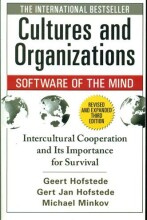Summary: International Law 2Nd Edition | 9781316506608 | Jan Klabbers
- This + 400k other summaries
- A unique study and practice tool
- Never study anything twice again
- Get the grades you hope for
- 100% sure, 100% understanding
Read the summary and the most important questions on International Law 2nd Edition | 9781316506608 | Jan Klabbers
-
1 The setting of International Law
This is a preview. There are 16 more flashcards available for chapter 1
Show more cards here -
1.1 Introduction
-
What is public international law
Public international law deals with legal issues between more than one state; it is defined as 'the system of law that regulates the interrelationship of sovereign states and their rights and duties with regard to one another",' Public international law must be distinguished from 'private' international law, which consists of national law that deals with 'conflicts of law and establish rules for the treatment of cases that involve a element’. -
The American Society of International Law (ASIL) identified 100 ways international law shapes and affects our lives and the world we live in. One of the consequences of the expanding reach of international law has been the development of many sub-disciplines name a couple
As societies become more specialized and intertwined, the same applies to international law. The American Society of International Law (ASIL) identified 100 ways international law shapes and affects our lives and the world we live in. For instance, the food we eat and the stuff we watch on Netflix were at some point subjects of International Law. One of the consequences of the expanding reach of international law has been the development of many sub-disciplines. Such as:- International human rights law;
- International law of the sea;
- and International environmental law.
- International human rights law;
-
What does it mean that international law is a decentralized legal system
International law remains a decentralized legal system in which it is primarily up to the legal subjects themselves to create, interpret and enforce the law. -
1.2 The seventeenth century
This is a preview. There are 6 more flashcards available for chapter 1.2
Show more cards here -
Most relevant reason 17th century stands out?
Peace of Westphalia in 1648 that marked the end of the Thirty Years War. Europe would divide itself in territorial units and each unit could chose their own religion. No outside interference was permitted--> birth of sovereign states and the modern state system. -
What was the second important event in the 17th century?
Publication of 'on the law of peace and war' by Hugo Grotius. Main point was the freedom of the seas. This was very good for the East Indian Trading Company and it paved the way for the Dutch Golden Century.
Grotius' relevance :- he forms a bridge between natural law theory and positive law theory.
- first to present synthetic, comprehensive view of IL
-
what did The Peace of westphalia conclude
The Peace of westphalia included The Peace of Munster and the Treaties of Munster and Osnabruk, where the major European powers sought to reestablish order in Europe. -
how is The Peace of westphalia also identified
It is identified as the beginning of international law because of the principles it has laid down, including the inferior inviolability of borders and non-interference in the domestic affairs of sovereign States. That is why today we still refer to it as westphalian sovereignty. The united nation is also built upon this westphalian principles as it is based on respect for the principle of equal rights and self-determination of peoples and on the suffering equality of all members. -
When did The Geneva Convention came into being
In 1859 the battle of solferino with all it's Horrors 40,000 deaths and wounded without medical assistance, made a big impression on Henry Dunant. In 1864 he found the Red Cross in the same year the Geneva Convention came into being -
What was instated in the st. Petersburg declaration
in the st. Petersburg declaration of 1868 a limit to acceptable warfare was instated: the dum-dum bullet was outlawed (verboden.- the Hague Law: The law of military necessity
- Geneva Law: the protection of Citizens and treatment of Prisoners of War
- the Hague Law: The law of military necessity
-
1.7 International law in International relations theory
-
Three approaches of the usefulness of IL
- Self-proclaimed realists: ten to view IL as largely irrelevant, because there is always a struggle for power and states will do anything to further their own interests.
- liberal institutionalist: IL can be of relevance. Legal rules when designed properly can create certainty and stability. Legal rules can have a lot of advantages. Between 1 and 2: the law and economics approach: all the world's a market and while in good hands this approach generates illuminating insights.
- constructivist approach: takes IL very serious. IL delivers the framework and vocabulary that helps make international politics possible
- Self-proclaimed realists: ten to view IL as largely irrelevant, because there is always a struggle for power and states will do anything to further their own interests.
- Higher grades + faster learning
- Never study anything twice
- 100% sure, 100% understanding

































